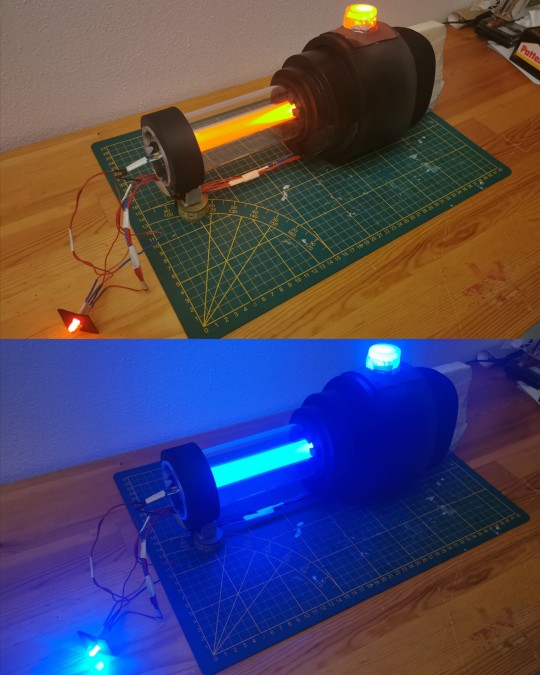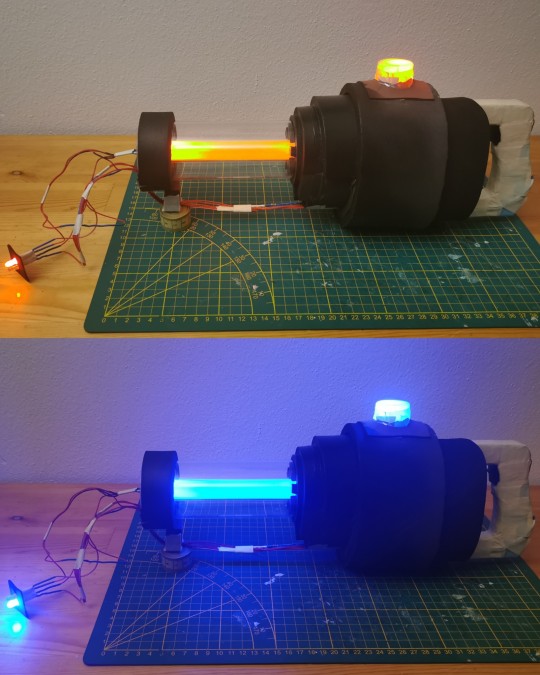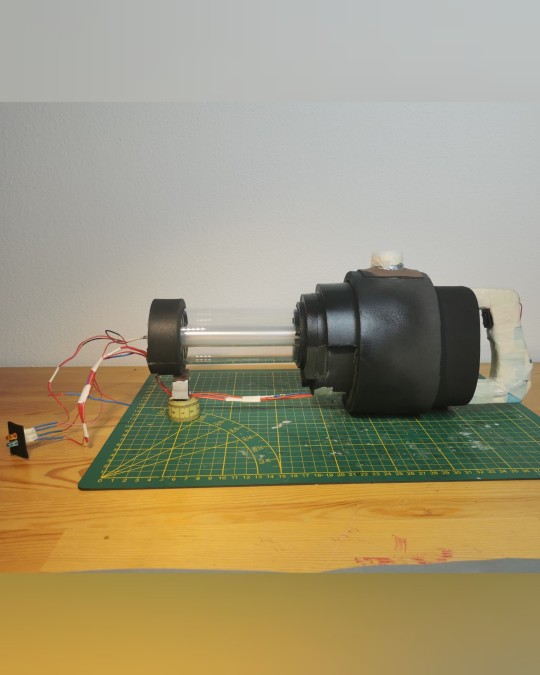#Laboratory Devices
Text
HOW TO CHOOSE THE RIGHT MICROCENTRIFUGE FOR YOUR LAB?
What Is A Microcentrifuge?
Microcentrifuge is an essential piece of equipment in a laboratory used for spinning a variety of samples at high speed, enabling, for instance, the pelleting of nucleic acids or proteins from solution, microfiltration of small aqueous samples and gathering liquid into the bottom of a tube in order to avoid wastage. The samples can be evenly spun without the need for a technician if you have a microcentrifuge. The repeated sample can be treated the same way. Your samples can be introduced to the machines by a number of technicians, but the treatment will remain the same.
With so much advanced research, science and technology it is wise to educate yourself about the wide range of centrifuge options now available. This will help you choose a model that will suit your needs not only for a short time but for future years as well.
Types of Microcentrifuge
Refrigerated microcentrifuge
Economic microcentrifuge
Laboratory microcentrifuge
It is important to choose the right microcentrifuge to facilitate different experiments and functions respectively. Neuation provides you with 6 types of microcentrifuges differentiating in speed and capacity ranging from max speed of 6000 rpm and 15000 rpm and max capacity of 8 x 1.5/2 ml and 12 x 1.5/2 ml.

How To Choose The Right Microcentrifuge?
There are multiple centrifuge models available. A centrifuge is a long-term investment for the laboratory. Hence there are some key questions one should consider before choosing the correct microcentrifuge.
Is The Chosen Model Safe Enough?
Important safety features should be considered while purchasing a microcentrifuge include whether the machine will run if the samples are not carefully distributed to provide the best balance or there is a lid to the machine to protect technicians from tubes that break during the centrifugal process.
What Is The Application Scope Of Your New Microcentrifuge?
You will need to think about what volumes of materials you are looking at working with? Also, how many people would be using microcentrifuge, how much the microcentrifuge is going to be utilized per day and in which environment. Lastly, what budget do you have available to buy your microcentrifuge for?
Floor Model or Benchtop?
Floor-standing and bench-top centrifuges are the most general and common type with volumes ranging over 0.2 to 750ml or so. Centrifuges are generally classified as either floor-standing or bench-top. Within each category there are several platforms to choose from. Whichever style you choose is typically determined by performance requirements, available space and budget.
Floor-standing centrifuges free up bench space and are often used for high-speed or high-capacity sample processing. There are superspeed centrifuges, ultracentrifuges, and low-speed centrifuges.
The bench-top centrifuges offer versatility and convenience, and can be equipped with many ways to accommodate a broad range of requirements, making them cost-effective solutions for the laboratories. General purpose centrifuges, microcentrifuges, small-clinical centrifuges, cell–washers, and high-speed models are included in Bench-top centrifuges.
Acknowledging and understanding different types of centrifuges and applications they support is a good initial step in the selection process. Once you have identified your application centrifuge model, the supplier should help you configure the best system (centrifuge, rotor and consumables) to meet your detailed requirements. Keep three parameters in mind while selecting a centrifuge.
Your requirements
Specifications such as speed and performance, instrument capacity, ease of operation, and reliability.
Total cost and budget
Ensure that the chosen centrifuge provides a long-term function and capacity that will support your research and experiments for many years to come. Neuation Technologies Pvt. Ltd. is a microcentrifuge machine manufacturer. We offer various microcentrifuge machines like; iFuge M08, iFuge BL08VT, iFuge M5K Combi, iFuge M15K, iFuge D12, iFuge M12P many more.
0 notes
Text
one of these days i gotta explain my headcanon that the kaos you can play as in imaginators is, in fact, the Actual Original Kaos and the kaos you fight in-game was the clone all along because something something “kaos’ ego would not allow himself to admit that he actually liked working alongside the skylanders post-superchargers so in an attempt to keep both his evil villain status while still getting to feel like part of a family without having to admit that he’d ‘gone soft’, he made up an entire fake story about him being a clone created with mind magic. also flynn knows he’s lying but that’s not important right now” because haha woah buddy kaos is painfully ooc in that game and this is the only way i can reconcile with his characterization lol
#whissu rambles#[staring down my sensei kaos figure] i know who you are boy#this has bothered me since 2016 i’m not even joking#‘ohhh kaos is bad at mind magic because he’s dumb and uncreative—‘ he created the wilikin as a literal child#and designed devices that could alter reality. also as a child.#he’s an inventor and he has his own factory and laboratory. he’s half-wizard-half-mad scientist do you Understand.#kaosposting#kaos skylanders
41 notes
·
View notes
Text

This is a Void Termina Wallpaper Engine desktop wallpaper I illustrated and animated to be interactable with the mouse! If you have Steam and have WE installed, you can download and use this wallpaper on your device for free!
The Wallpaper Engine software on it's own is about $4, but again all my wallpapers are free to use on your desktop. Enjoy
#I still feel so proud of this thing#but I can see some places where i can make this better#took months to paint and edit in wallpaper engine's editor#there's also a zero2 and elfilis wallpaper on my workshop#BUT zero2's is way too powerful for lower spec devices and I need to make a 1920x1080 version for it#when i have the time hhhhhh#kirby#kirby star allies#void termina#hal laboratory#nintendo#fanart#wallpaper engine#old art#from 2020
132 notes
·
View notes
Text



the portal posting continues-
i started building this thing three years ago and finally got around to fix the led situation. will keep you updated-
#cosplay#portal#portal 2#portal gun#handheld portal device#aperture science#aperture laboratories#this whole build is a mess but at least i was able to add the leds i previously decided against#man idk what i did with the wires three years ago but it somehow worked out
15 notes
·
View notes
Text
Chem lab

It is right about here that Archie Comics lied to me. I thought you enter high school and find this wondrous world where the chemistry lab is a place of frequent explosions. And it wasn't that I was wanting to see this happen all that often, -- just often enough to know it was a possibility -- to lend an element of danger and adventure. But nothing of the sort happens. Ever. And I come to find the few ventures into lab activity are tiightly controlled, no element ever runs against any other element for the slightest danger. Shirts remain in tact. Somewhere toward the end of the year, the Chemistry teacher has a gimmicky lesson of sorts where we ended up concocting ice cream -- gimmicky in the same way the Trigonometry class took time to build and fly kites. I do not fully know what the Physics class was doing in propelling eggs through the air -- I did not take the class -- but that seems the closest to any explosions happening -- and that is so far from books and bangs that it is just kind of sad.

#Archie Comics#Archie Andrews#Betty Cooper#Veronica Lodge#Jughead#Dilton Doiley#Nancy Woods#Stan Goldberg#2002#2006#1999#2004#Chemistry#Chemistry Laboratory#explosive devices#chemical reactions
6 notes
·
View notes
Text
#We develop healthcare supply chain solutions that are natively multimodal#safe#transparent#and digitally-enabled and built around your patient's well-being whilst caring for our planet. Our team of healthcare logistics experts und#privacy and compliance requirements needed to keep the patient at the center of your supply chain. We provide you with logistics solutions#FORPATIENTS | GLOBAL HEALTHCARE OFFERINGS#Our centralized global healthcare offerings under the FOR PATIENTS umbrella gives greater visibility and delivery of our service range#providing you with solutions in the following areas: Temperature-sensitive solutions#Pharma and biopharma#Medical devices#Consumer health#Hospital and home care#and Diagnostic and Laboratory Services.#onlineSolutionsRx#AmbienZolpidem10mg#XanaxAlprazolam1mg#XanaxAlprazolam2mg#ValiumDiazepam10mg#KlonopinClonazepam1mg#KlonopinClonazepam2mg#AtivanLorazepam2mg#Tramadol50mg#Tramadol100mg#Tramadol225mg#Hydrocodone#Adderall30mg#OxycodoneOxycontin30mg#OxycodoneOxycontin60mg#OxycodoneOxycontin80mg#Phentermine
2 notes
·
View notes
Text
In a 1962 Army reorganization, DOFL was assigned directly to the Army Materiel Command (AMC) as a corporate laboratory; in 1963, its name was officially changed to Harry Diamond Laboratories (HDL). AMC later established the Electronics Research and Development Command (ERADCOM) as subordinate command, with HDL reporting to that command. HDL was subsequently transferred to the Army Laboratory Command (LABCOM). In 1972, Jack Anderson reported that HDL was working on "short-time-span control of human behavior", which Anderson characterized as "Experiments to control human behavior with science fiction devices". An Army spokesman responded that the research program was looking at alternative ways for crowd control.
2 notes
·
View notes
Text
Laboratory Informatics Market Size, Trends, Competitors Strategy, Regional Analysis and Growth by Forecast to 2031
The Insight Partners is offering qualitative and informative market understanding by adding market research titled “Laboratory Informatics Market Size, Trends, and Outlook to 2031”. The report focuses on the factors influencing growth, major players, and regional trends. The research offers a calculative assessment of recent developments adhering to prospects such as regions, key segments, and…
View On WordPress
0 notes
Text
Medical Equipment Supplier in UAE

Medikabazaar is a trusted medical equipment supplier in UAE, renowned for its focus on quality and reliability. We offer a wide range of products sourced from reputable manufacturers, ensuring top-notch quality. Their commitment to customer satisfaction is evident through competitive pricing and exceptional service, making them a preferred choice for healthcare facilities across the country. Whether you need advanced imaging devices or surgical instruments, Medikabazaar is your go-to supplier for all medical equipment needs in the UAE.
For More Details Visit: https://www.medikabazaar.ae
#Medical equipment supplier UAE#Medical devices supplier UAE#Healthcare equipment supplier UAE#Hospital equipment supplier UAE#medical equipment supplier dubai#buy medical equipment online uae#laboratory equipment supplier uae#medical equipment supplier in uae
0 notes
Text
Life Science Equipment Market by Technology (Spectroscopy, Microscopy, Chromatography (HPLC, GC, TLC), PCR, Immunoassay, Sequencing, Flow Cytometry, Lab Automation, Microarray, Electrophoresis, Incubator, Centrifuge) End User - Global Forecast to 2030
#Life Science Equipment Market#Life Science Equipment#laboratory#lab equipment#medical devices#biotech#biotechnology#research
0 notes
Text
What is a Digital Counter? Function, How it Works, Benefits and Maintenance
In the digital era, counters have become ubiquitous in both industrial and consumer applications. A digital counter is an electronic device that records the number of times a particular event or process occurs. This article delves into the essence of digital counters, their functionality, benefits, and maintenance practices.
Definition of a Digital Counter
Digital Counter, 4 Digit, Up/ Down,…

View On WordPress
0 notes
Text
Laboratory Equipment Services Market Future Plans and Trends by Forecast 2031

The Insight Partners offers investors a comprehensive study of the Laboratory Equipment Services market from the perspective of entrepreneurs in their most recent research report, " Laboratory Equipment Services Market Share, Size and Trends Analysis | 2031" Examining current market conditions yields insightful information for businesses.
This report provides insights into market possibilities, obstacles, and incentives that companies shouldn't pass up. It would be a company recipe for success to choose a Laboratory Equipment Services market research since consumer-centric firms often provide higher returns on investment. Making a small batch of items won't be enough, given the intense competition in the Laboratory Equipment Services market. Businesses may estimate a product's potential and success with the use of market research.
The study is perhaps a perfect mix of qualitative and quantitative information highlighting key market developments, challenges, and competition the industry faces alongside gap analysis and new opportunities available and trends within the market. The Laboratory Equipment Services market report offers market size, recent trends, growth, share, development status, government policy, market dynamics, cost structure, and competitive landscape. The research report also includes the present market and its growth potential in the given period of forecast.
At the heart of our success lies a commitment to rigorous and reliable methodologies. The firm employs a combination of quantitative and qualitative approaches, ensuring a holistic understanding of Laboratory Equipment Services market analysis dynamics. This includes:
Primary Research: In-depth interviews and surveys with key industry stakeholders provide firsthand insights into Laboratory Equipment Services market trends and challenges.
Data Analytics: Advanced data analytics tools and techniques are utilized to process large datasets, uncovering patterns and correlations that might otherwise go unnoticed in calculating the Laboratory Equipment Services market size.
Expert Analysis: A team of seasoned analysts with diverse industry expertise meticulously analyzes data to draw actionable conclusions and provide strategic recommendations about the Laboratory Equipment Services market forecast.
Key companies in the Laboratory Equipment Services market are- , Agilent Technologies, Waters Corporation, Thermo Fisher Scientific Inc, PerkinElmer Inc., Danaher Corporation, Eppendorf, Pace Analytical Services Inc., Becton Dickinson and Company, Bio-Rad Laboratories Inc, Siemens Healthineers and othersOn the Basis of Equipment Type this market is categorized further into-
Analytical Equipment
General Equipment
Specialty Equipment
Support Equipment
On the Basis of Service Type this market is categorized further into-
Repair and Maintenance Services
Calibration Services
Validation Services
Other
On the Basis of Service Providers this market is categorized further into-
Original Equipment Manufacturers
Third-Party Service Providers
Other Service Providers
On the Basis of Contract Type this market is categorized further into-
Standard Service Contracts
Customized Service Contracts
Key regions Laboratory Equipment Services Market Research Report:
North America (U.S., Canada, Mexico)
Europe (U.K., France, Germany, Spain, Italy, Central & Eastern Europe, CIS)
Asia Pacific (China, Japan, South Korea, ASEAN, India, Rest of Asia Pacific)
Latin America (Brazil, Rest of Latin America)
The Middle East and Africa (Turkey, GCC, Rest of the Middle East and Africa)
Rest of the World
This report is an essential resource for businesses seeking to stay ahead of the competition in the Laboratory Equipment Services market. With its comprehensive analysis of recent developments and emerging trends, it provides valuable insights into the market that can be used to develop effective growth strategies and improve market positioning. The report aims to provide readers with a comprehensive overview of the market analyses. Its objective is to aid readers in devising business growth strategies, assessing the competitive landscape, evaluating their position in the current Laboratory Equipment Services market, and making well-informed business decisions. The report presents several market projections for crucial variables such as market size, manufacturing, revenue, consumption, CAGR, gross margin, and price.
How can this research help you in getting business strategically correct?
Exact valuation and key facts about the market | 2031
Value proposition analysis that helps businesses revise their offerings timely
Marketing and segmentation strategies for new entrants in the market
Competitive Laboratory Equipment Services market growth strategies for market participants
Latest trends and technologies in the market
About Us:
The Insight Partners is a one-stop industry research provider of actionable intelligence. We help our clients in getting solutions to their research requirements through our syndicated and consulting research services. We specialize in industries such as Semiconductor and Electronics, Aerospace and Defense, Automotive and Transportation, Biotechnology, Healthcare IT, Manufacturing and Construction, Medical Devices, Technology, Media and Telecommunications, Chemicals and Materials.
0 notes
Text
Astute Labs Spearheading Innovation in Medical Device Testing
In the dynamic landscape of healthcare, the demand for precision and reliability in medical devices is paramount. Astute Labs emerges as a beacon of excellence, pioneering cutting-edge methodologies and technologies in medical device testing. With an unwavering commitment to quality and safety, Astute Labs stands at the forefront of ensuring the efficacy and compliance of medical devices. Here’s a closer look at how Astute Labs is shaping the future of medical device testing.
Redefining Standards: Astute Labs doesn’t just meet industry standards; it sets new benchmarks. By leveraging state-of-the-art equipment and innovative techniques, Astute Labs continuously pushes the boundaries of what’s possible in medical device testing. From initial concept to final product, every step is meticulously scrutinized to ensure optimal performance and safety.
Comprehensive Testing Solutions: Astute Labs offers a comprehensive suite of testing services tailored to meet the diverse needs of medical device manufacturers. Whether it’s biocompatibility testing, sterilization validation, or performance evaluation, Astute Labs provides end-to-end solutions that instill confidence in the reliability and efficacy of medical device testing laboratories.
Expertise and Experience: At the heart of Astute Labs is a team of seasoned professionals with unparalleled expertise in medical device testing. With years of experience and a deep understanding of regulatory requirements, the team at Astute Labs offers invaluable insights and guidance throughout the testing process, ensuring seamless navigation of complex regulatory landscapes.
Innovation and Adaptability: In an industry that’s constantly evolving, innovation and adaptability are essential. Astute Labs remains at the forefront of technological advancements, constantly exploring new methodologies and approaches to enhance testing efficiency and accuracy. By staying ahead of the curve, Astute Labs enables medical device manufacturers to bring innovative products to market faster and more confidently.
A Trusted Partner: Beyond just a testing laboratory, Astute Labs is a trusted partner to medical device manufacturers worldwide. With a reputation for excellence and reliability, Astute Labs fosters long-term relationships built on trust, integrity, and mutual success. From startups to multinational corporations, clients turn to Astute Labs for unparalleled expertise and support at every stage of the product lifecycle.
Astute Labs is not just a testing laboratory; it’s a catalyst for innovation and excellence in the field of medical device testing. With a relentless pursuit of quality, precision, and reliability, Astute Labs continues to shape the future of healthcare by ensuring that medical devices meet the highest standards of safety and efficacy. As the industry evolves, Astute Labs remains committed to empowering medical device manufacturers with the insights and solutions they need to succeed in a rapidly changing landscape.
0 notes
Text
170 L Combustible Cabinet
170 L Combustible Cabinet Capacity=170-l; Door type=dual-door-manual; Adjustable shelf=2; Shelves loading capacity=100-kgs; Dimension (H x W x D) =1650-x-1090-x-460-mm;Shop online at Labtron.cc.

0 notes
Text
Team engineers nanoparticles using ion irradiation to advance clean energy and fuel conversion
New Post has been published on https://thedigitalinsider.com/team-engineers-nanoparticles-using-ion-irradiation-to-advance-clean-energy-and-fuel-conversion/
Team engineers nanoparticles using ion irradiation to advance clean energy and fuel conversion


MIT researchers and colleagues have demonstrated a way to precisely control the size, composition, and other properties of nanoparticles key to the reactions involved in a variety of clean energy and environmental technologies. They did so by leveraging ion irradiation, a technique in which beams of charged particles bombard a material.
They went on to show that nanoparticles created this way have superior performance over their conventionally made counterparts.
“The materials we have worked on could advance several technologies, from fuel cells to generate CO2-free electricity to the production of clean hydrogen feedstocks for the chemical industry [through electrolysis cells],” says Bilge Yildiz, leader of the work and a professor in MIT’s departments of Nuclear Science and Engineering and Materials Science and Engineering.
Critical catalyst
Fuel and electrolysis cells both involve electrochemical reactions through three principal parts: two electrodes (a cathode and anode) separated by an electrolyte. The difference between the two cells is that the reactions involved run in reverse.
The electrodes are coated with catalysts, or materials that make the reactions involved go faster. But a critical catalyst made of metal-oxide materials has been limited by challenges including low durability. “The metal catalyst particles coarsen at high temperatures, and you lose surface area and activity as a result,” says Yildiz, who is also affiliated with the Materials Research Laboratory and is an author of an open-access paper on the work published in the journal Energy & Environmental Science.
Enter metal exsolution, which involves precipitating metal nanoparticles out of a host oxide onto the surface of the electrode. The particles embed themselves into the electrode, “and that anchoring makes them more stable,” says Yildiz. As a result, exsolution has “led to remarkable progress in clean energy conversion and energy-efficient computing devices,” the researchers write in their paper.
However, controlling the precise properties of the resulting nanoparticles has been difficult. “We know that exsolution can give us stable and active nanoparticles, but the challenging part is really to control it. The novelty of this work is that we’ve found a tool — ion irradiation — that can give us that control,” says Jiayue Wang PhD ’22, first author of the paper. Wang, who conducted the work while earning his PhD in the MIT Department of Nuclear Science and Engineering, is now a postdoc at Stanford University.
Sossina Haile ’86, PhD ’92, the Walter P. Murphy Professor of Materials Science and Engineering at Northwestern University, who was not involved in the current work, says:
“Metallic nanoparticles serve as catalysts in a whole host of reactions, including the important reaction of splitting water to generate hydrogen for energy storage. In this work, Yildiz and colleagues have created an ingenious method for controlling the way that nanoparticles form.”
Haile continues, “the community has shown that exsolution results in structurally stable nanoparticles, but the process is not easy to control, so one doesn’t necessarily get the optimal number and size of particles. Using ion irradiation, this group was able to precisely control the features of the nanoparticles, resulting in excellent catalytic activity for water splitting.”
What they did
The researchers found that aiming a beam of ions at the electrode while simultaneously exsolving metal nanoparticles onto the electrode’s surface allowed them to control several properties of the resulting nanoparticles.
“Through ion-matter interactions, we have successfully engineered the size, composition, density, and location of the exsolved nanoparticles,” the team writes in Energy & Environmental Science.
For example, they could make the particles much smaller — down to 2 billionths of a meter in diameter — than those made using conventional thermal exsolution methods alone. Further, they were able to change the composition of the nanoparticles by irradiating with specific elements. They demonstrated this with a beam of nickel ions that implanted nickel into the exsolved metal nanoparticle. As a result, they demonstrated a direct and convenient way to engineer the composition of exsolved nanoparticles.
“We want to have multi-element nanoparticles, or alloys, because they usually have higher catalytic activity,” Yildiz says. “With our approach, the exsolution target does not have to be dependent on the substrate oxide itself.” Irradiation opens the door to many more compositions. “We can pretty much choose any oxide and any ion that we can irradiate with and exsolve that,” says Yildiz.
The team also found that ion irradiation forms defects in the electrode itself. And these defects provide additional nucleation sites, or places for the exsolved nanoparticles to grow from, increasing the density of the resulting nanoparticles.
Irradiation could also allow extreme spatial control over the nanoparticles. “Because you can focus the ion beam, you can imagine that you could ‘write’ with it to form specific nanostructures,” says Wang. “We did a preliminary demonstration [of that], but we believe it has potential to realize well-controlled micro- and nano-structures.”
The team also showed that the nanoparticles they created with ion irradiation had superior catalytic activity over those created by conventional thermal exsolution alone.
Additional MIT authors of the paper are Kevin B. Woller, a principal research scientist at the Plasma Science and Fusion Center (PSFC), home to the equipment used for ion irradiation; Abinash Kumar PhD ’22, who received his PhD from the Department of Materials Science and Engineering (DMSE) and is now at Oak Ridge National Laboratory; and James M. LeBeau, an associate professor in DMSE. Other authors are Zhan Zhang and Hua Zhou of Argonne National Laboratory, and Iradwikanari Waluyo and Adrian Hunt of Brookhaven National Laboratory.
This work was funded by the OxEon Corp. and MIT’s PSFC. The research also used resources supported by the U.S. Department of Energy Office of Science, MIT’s Materials Research Laboratory, and MIT.nano. The work was performed, in part, at Harvard University through a network funded by the National Science Foundation.
#amp#approach#Brookhaven National Laboratory#catalyst#catalysts#Cells#chemical#clean energy#CO2#Community#Composition#computing#devices#Difference Between#DMSE#easy#electricity#electrodes#electrolyte#energy#energy storage#Engineer#engineering#engineers#Environmental#equipment#Features#form#Forms#Foundation
0 notes
Text
What Resources You Need for Your Small Clinic
#Health#Diagnostic Equipment#Healthcare#Laboratory Equipment#Medical Equipment#Patient Monitoring Devices#Small Clinic#Therapeutic Equipment
0 notes